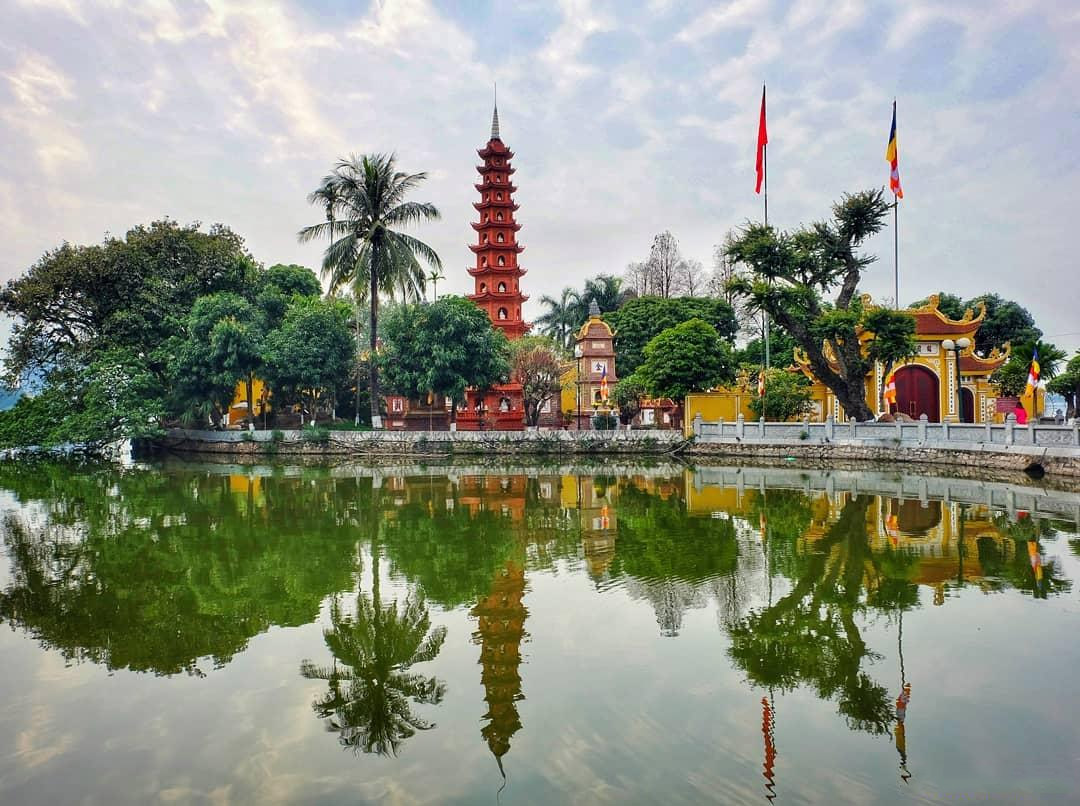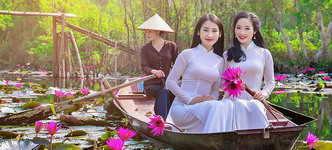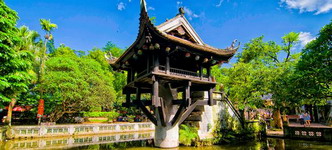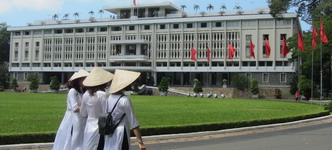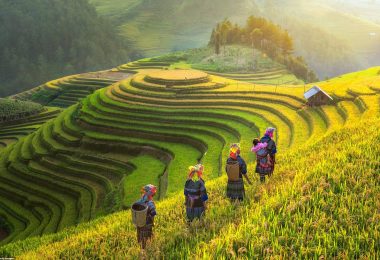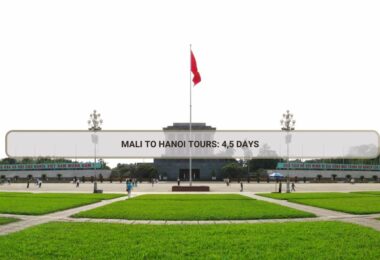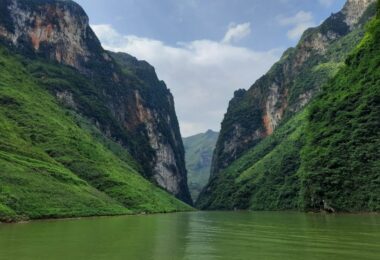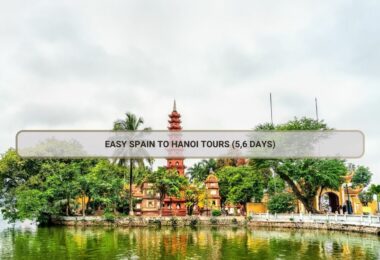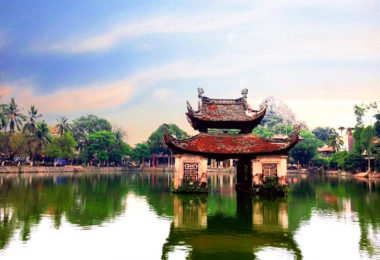The sacred ancient temple in the heart of Hanoi Tran Quoc Pagoda, West Lake, Hanoi As the oldest temple in Hanoi preserved to this day, Tran Quoc Pagoda is likened to a “jewel" with many special features in the midst of the immense West Lake. Over thousands of years, the temple still retains its architecture according to strict Buddhist principles and has become an attractive spiritual destination of the capital, attracting a large number of tourists to visit and celebrate every year.
Where is Tran Quoc Pagoda?
Tran Quoc Pagoda was built on the eastern island of West Lake, located at the end of Thanh Nien Street in Tay Ho District, Hanoi. In 2016, Tran Quoc Pagoda was in the list of 16 most beautiful temples in the world voted by the British Daily Mail. In 2019, according to the rankings of wanderlust.co.uk, Tran Quoc Pagoda ranked 3rd out of 10 temples with “unbelievable" beautiful scenery in the world.
Hanoi tourism – 12 places, 5 specialties must experience when coming to the capital of a thousand years of civilization Opening time of Tran Quoc Pagoda Tran Quoc Pagoda is open from 8 a.m. to 4 p.m. every day of the week, especially on New Year’s Eve the temple will be open all night.
Tickets to Tran Quoc Pagoda Tran Quoc Pagoda does not sell entrance tickets, guests are free to visit and perform ceremonies without restriction. History of Tran Quoc Pagoda Tran Quoc Pagoda was originally named Khai Quoc Pagoda, built-in 541 in the Early Ly Dynasty. At that time, the pagoda was located near the banks of the Red River, so when the dyke collapsed in 1615 (in the reign of King Le Trung Hung), the pagoda was relocated inside the Yen Phu dyke in the Kim Nguu mound area. Then, in the 17th century, Lord Trinh built Co Ngu dike (now Thanh Nien street) to connect with Kim Nguu island. The pagoda changed its name to Tran Quoc Pagoda during the reign of King Le Hy Tong (1681 – 1705) with the meaning that this would be a place to help people dispel natural disasters and bring a peaceful life to the people. And that name is used to this day. In the past, Tran Quoc Pagoda was the Buddhist center of Thang Long citadel. The Ly and Tran kings often visited and worshiped on holidays and Tet at the temple, so many palaces were built to serve the king’s rest: Thuy Hoa palace, Ham Nguyen palace. This temple with a history of 1,500 years is considered the oldest in Thang Long – Hanoi. Who does Tran Quoc Pagoda worship? Tran Quoc Pagoda follows the Bac Tong sect, inside the shrine worships Amitabha Buddha, Shakyamuni Buddha, and Bodhisattva Guan Yin. At present, the pagoda still preserves many valuable Buddha and Bodhisattva statues, which are located mainly in the Upper Palace. In which, the most prominent is the statue of Buddha entering Nirvana made from wood, painted with gold paint, and is a beautiful statue of Nirvana in Vietnam.
There are 14 stone steles in the pagoda, including those of poinsettia Nguyen Xuan Chinh (1587 – 1693) and doctor Pham Quy Thich (1760 – 1825). The epitaphs have recorded many precious documents and fully described the times of temple construction in 1624, 1628, 1639, 1815, 1821, and 1842. Along the main hall with many levels of intricately carved hammock doors, there is a full system of gold-plated Buddha and Bodhisattva statues, the two doors to the incense burner have a standing diamond statue. The left pavilion worships Quan Vu and Chau Suong statues and the right compartment worships the statue of Duc Ong and his attendants. The architecture of Tran Quoc Pagoda The architecture of Tran Quoc pagoda shows the aesthetics of oriental architecture, sticking with the surrounding sky and water landscape. Like most other temples in Vietnam, Tran Quoc Pagoda has many houses. The pagoda has three main houses: the front hall, the incense burning house and the upper hall connected to the shape of the word Cong. The two sides of the incense burning house and the upper hall are two corridors. Behind the upper hall is the bell tower. On the right is the ancestral house and on the left is the stele house. In 1998, Most Venerable Kim Cuong Tu – the abbot of Tran Quoc Pagoda was allowed to build a stupa of six degrees of lotus in the temple’s premises, consisting of 11 floors, 15 meters high, with a floor area of 10.5 square meters called Bao Thap. Each floor of the tower consists of 6 arched doorways, with a precious stone statue of Amitabha Buddha. The total number of statues of the tower is 66 phoenixes and on the top, there are 9 floors of lotus pedestals also made of precious stones (nine products of lotus flowers). The stupa was erected symmetrically with the Bodhi tree presented by the President of India in 1959 during his visit to Hanoi. This Bodhi tree is extracted from the Bodh Gaya tree – where Shakyamuni Buddha sat and practiced his religion more than 25 centuries ago.
What to pray for at Tran Quoc Pagoda?
Tran Quoc Pagoda is a place many tourists and locals come to visit, praying for peace and health. With those historical and architectural values, the pagoda was recognized as a national historical and cultural relic site in 1989. Tran Quoc Pagoda today is not only famous as a sacred Buddhist pagoda but also attracts many people. Buddhist followers come to worship but also attract tourists, domestic and foreign tourists when traveling to Hanoi.






























